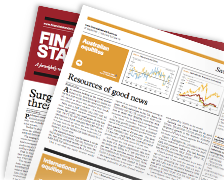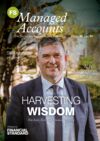Proposed super tax obfuscates legacy pensions rules: SMSFABY KARREN VERGARA | WEDNESDAY, 24 APR 2024 11:58AMThe proposed 30% tax on large superannuation balances must clarify the confusion surrounding legacy pensions and reserves, and how they should be calculated, according to the SMSF Association (SMSFA). The SMSFA is calling for an amnesty for legacy pensions in the upcoming federal budget as current draft regulations proposing to increase the 15% tax to 30% on super balances above $3 million (Division 296 tax) are not clear on how they must be valued. "The confusion stems from the fact these types of pensions do not have a family law split value, meaning under the draft regulations it will require a different set of valuation factors to be used rather than the default law split factors, that appeared to be the intent of the regulations," SMSFA chief executive Peter Burgess said. Treasury has confirmed, Burgess said, that the intent is for a self-managed super fund (SMSF) paying a complying lifetime or life expectancy pension to use the Family Law Split factors in the relevant Schedule of the Family Law (Superannuation) Regulations 2001 to value the pension for Division 296 purposes. The draft regulation must also clarify who will be responsible for calculating the value of legacy pensions. "Considering the ATO doesn't have the required information, we assume the funds themselves will be asked to do this calculation and report the value in their annual return. Compounding this difficulty is the relatively small and declining number of these pensions, meaning it's unlikely SMSF administration platforms will undertake this calculation," he said. Many legacy pensions cost a substantial amount to administer. With Division 296 tax looming, costs are tipped to increase. Consequently, the SMSFA is urging Treasury to fast track the legacy pension amnesty as first announced in the 2021 budget in this year's budget. "There is a window of opportunity now to significantly reduce the number of these pensions before the proposed new tax commences on 1 July 2025," Burgess said. Further, Division 296 will likely make the rules around reserves associated with legacy pensions even more convoluted. "Division 296 is about to make the valuation of pension reserves and allocations to members a whole lot more complex and we are calling on the Government to adopt a wholistic approach in managing reserves, that avoids non sensical tax stacking," he said. "An amnesty will help reduce the remaining number of these legacy pensions by giving individuals the opportunity to take up new more innovative account-based retirement income products. This in turn will make the administration of Division 296 a whole lot simpler and efficient for taxpayers, regulators, and the superannuation industry." Related News |
Editor's Choice
Janus Henderson acquires NBK Wealth, Tabula Investment Management
ART names advice and education leads
Men, women in same occupation drive pay gap
Macquarie Group profits falls 32% to $3.52bn
Products
Featured Profile

Robert De Dominicis
GBST HOLDINGS LIMITED
























